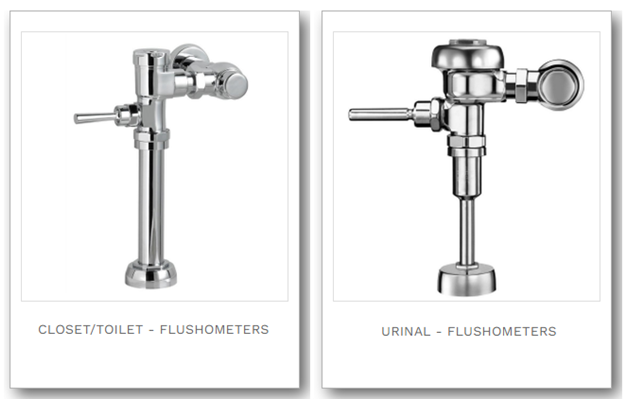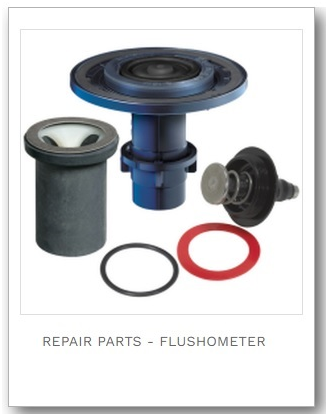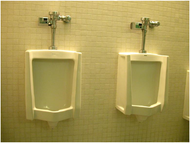Flushometer Parts: Understanding Flushometers
Mar 27th 2024
At Quality Plumbing Supply, we offer flushometer parts and kits for all your flushometer repair and installation needs. Read on to know more about flushometers and whether they’re right for you if you’re considering the technology for your new construction or renovation project.
What Is Flushometer?
Designed for efficiency and water conservation, a flushometer is the commercial counterpart of the residential flush valve. It’s basically a commercial flush valve.
It is tankless and uses only the water pressure to flush the contents of the toilet and urinal, and discharges a predetermined amount of water only. It’s different from the tank-style toilet in homes that rely on gravity to flush water.
You may not know it by name but you’ve definitely seen and used it before. This is typically found in commercial buildings and institutions, as well as in public restrooms.

How Do Flushometers Work?
Flushometers have a high pressure and low-pressure chambers. When at rest, the pressure of the water in the upper and the lower chamber is equal.
This causes the flexible rubber diaphragm to close tightly on the valve seat. So when you flush and the handle is pressed, the safety valve opens and discharges water from the upper cavity, reducing the pressure in the process.
The high-pressure water from the inlet lifts the diaphragm up and flows down the flushing pipe. During the flushing process, some water is forced back to the upper chamber through a small bypass hole in the diaphragm.
The flushing continues until the pressure equalizes and pushes the diaphragm down onto the valve seat, ready for another flush.
Types of Flushometer
There are two types of flushometers: piston flushometers and diaphragm flushometers.
●Piston flushometers are molded cup (or piston) valves between the high-pressure and low-pressure chambers
●Diaphragm flushometers are rubber diaphragm valves between the high-pressure and low-pressure chambers
Both system types have a high-pressure and low-pressure chamber which these valves separate. When you flush the toilet, the separator (diaphragm or piston) gets displaced. When the pressure changes in the chamber, the valve will release water.
In other words, the only difference between the two types of flushometers is that one uses a molded cup (piston) to separate the lower and upper chambers, while the other uses a rubber diaphragm.
But that’s only as far as physical characteristics are concerned. Depending on restroom traffic, one or the other is better for you. We discussed that below.
Restroom Traffic
Which should you buy, piston or diaphragm flushometer? Pick one or the other depending on the volume usage of the restroom.
Restroom traffic can be categorized under two basic usage patterns: high traffic and low traffic.
If you have a high-traffic restroom (we're talking airport or sports stadium kind of traffic), the diaphragm technology will perform better. Diaphragms can flush water often. It has a quick recovery feature needed to immediately flush again, as is needed in high traffic situations.
If you have a low-traffic restroom, piston and diaphragm can both be used. Talk to a professional plumber about which one is better for your plumbing setup.
Why Use Flushometers?
The biggest reason is that it allows you to save water. A flushometer does not only use a single flush to bring waste down into the sewage system, it also uses a metered amount of water.
Most old toilets use as much as 7 gallons per flush. A flushometer only uses the federal standard of 1.6 gallons per flush.
Thus, flushometers can help you save a lot of water. This also ensures you have enough water for your toilet to always function properly.
Many people think that it is a waste of money to use a flushometer toilet. They think that changes in water level are not significant enough to justify the cost.
Should You Switch to Flushometers?
Short answer, you can. Commercial plumbing systems are generally set up to handle the flushometer system.
If you have an older building, you might want to check your plumbing system first, before planning anything.
For flushometers to work properly, the toilet needs to be able to function at a lower flush volume. Also, the piping should allow a water pressure of at least 20 - 25 psi (pounds per square inch).
Not all plumbing systems can support flushometers. Talk to a professional plumber if you’re thinking of switching from flush valve to flushometer.
Flushometer Parts Repair

You can prepare for potential repairs by knowing the service life of flushometer parts. When you know when a repair might happen, you can even prepare the necessary parts for it.
In fact, you don’t have to wait for damages. You can install new parts at the first sign of damage and avoid the hassle of emergency repairs.
In a building where toilet usage is high, it’s wise to plan for repair and replacements early rather than waiting for flush valves to no longer run.
Regular maintenance is vital to the longevity of the product.
Are Flushometers Worth it?
Water conservation not only can benefit the environment but also your pocket.
With flushometers, you’ll save water with every flush. Older commercial toilets waste gallons of water per flush, not so with a flushometer.
So, replacing an old toilet system with a flushometer technology is worth considering.
If you need more information about flushometers or if you want a flushometer system for your next construction project, get in touch with any of our representatives. We're glad to help.
Already have flushometers and need repair and replacement parts? We have that too. Look around our site and find what you need. You can also contact us for help.

